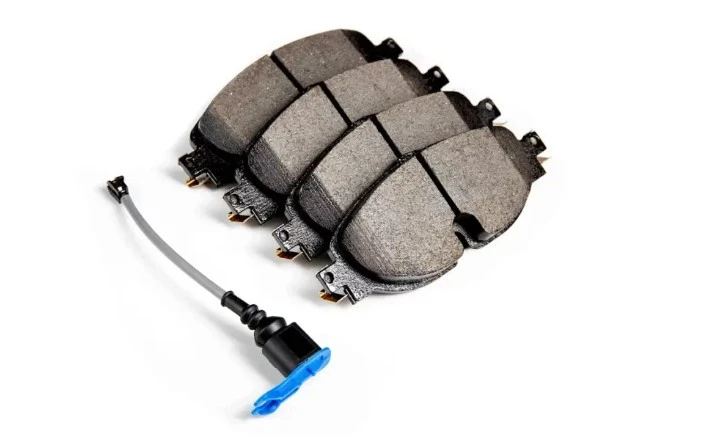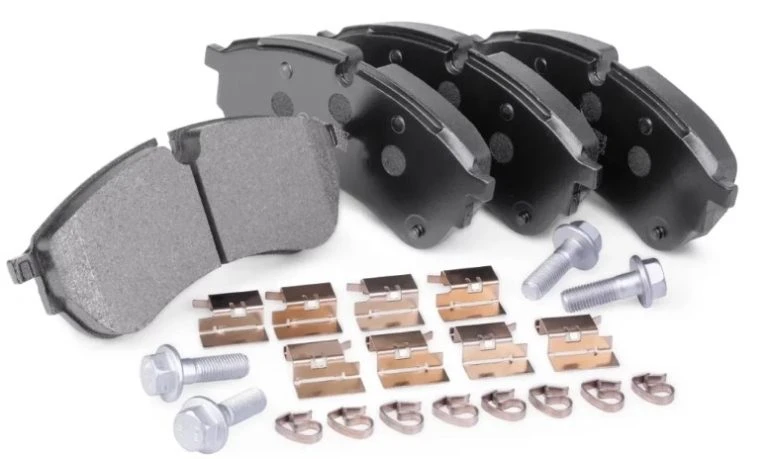Have you ever wondered how your vehicle’s braking system ensures your safety on the road? One crucial component that plays a significant role in maintaining optimal braking performance is the brake pad wear sensor. These small yet powerful devices act as guardians, constantly monitoring the wear level of your brake pads and providing timely warnings when replacements are needed.
In this short guide, we will dive into the world of brake pad wear sensors, exploring their purpose, types, working principles, and importance in keeping you safe on the road. Here’s everything you need to know about brake pad wear sensors.
Understanding Brake Pad Wear Sensors
As it turns out, there is more to brake pad wear sensors than meets the eye. You will find different types of sensors, each with its own unique method of warning you when your brake pads reach critical thickness.
Types of Brake Pad Wear Sensors
Brake pad wear sensors come in different types, each with its unique functionality. One type is mechanical sensors, which consist of a metal tab or wire attached to the brake pad. As the brake pad gradually wears down, the metal tab makes contact with the brake rotor, completing an electrical circuit and triggering a warning signal.
Another type is magnetic sensors that utilize a magnetic field to detect the distance between the sensor and the brake rotor. As the brake pad wears, the diminishing distance alters the magnetic field, activating the sensor to send a warning signal.
Working Principle of Brake Pad Wear Sensors
The working principle of brake pad wear sensors depends on their type. Mechanical sensors operate by creating an electrical connection when the metal tab contacts the brake rotor due to brake pad wear. These often come with brake pads if they’re within spec for your vehicle. This connection completes a circuit, signaling the vehicle’s onboard computer system to activate a warning light on the dashboard, indicating the need for brake pad replacement.
Magnetic sensors, on the other hand, rely on variations in the magnetic field. As the brake pad wears and the distance between the sensor and the brake rotor changes, the magnetic field is altered, triggering the sensor to send a signal to the vehicle’s computer system, which then activates the warning light or message.
Location of Brake Pad Wear Sensors
Brake pad wear sensors are typically positioned strategically within the braking system of a vehicle. They are commonly located near the brake caliper or in direct contact with the brake pad. However, the precise placement may vary depending on the specific make and model of the vehicle. These sensors are designed to be in close proximity to the brake pad to accurately monitor its wear level. By being in the right position, they can provide timely warnings to drivers when brake pad replacement becomes necessary.
Importance of Brake Pad Wear Sensors

Brake pad wear sensors play a crucial role in maintaining safety, enhancing performance, and ensuring cost-efficiency within a vehicle’s braking system. Understanding their importance can help drivers appreciate the significance of regular monitoring and timely maintenance.
Safety Enhancement
One of the primary reasons brake pad wear sensors are vital is their contribution to safety on the road. As brake pads wear down over time, their effectiveness in providing optimal braking power diminishes. Brake pad wear sensors act as an early warning system, alerting drivers when the brake pads have reached a critical level of wear. By receiving timely notifications, drivers can address the issue promptly and replace the worn brake pads, thus maintaining the necessary braking performance to prevent accidents.
Performance Optimization
Brake pad wear sensors are instrumental in optimizing the overall performance of a vehicle’s braking system. By regularly monitoring the wear level of brake pads, these sensors help ensure that the brakes remain in peak operating condition. Prompt replacement of worn brake pads maintains the necessary friction between the pads and the rotors, enabling efficient stopping power and responsive braking. This, in turn, enhances the overall driving experience and control of the vehicle.
Cost-Efficiency
Brake pad wear sensors can lead to cost savings in the long run. By detecting brake pad wear and providing timely warnings, they help prevent further damage to the braking system. Addressing brake pad wear promptly can help avoid excessive wear on other brake components, such as the rotors, which could result in more extensive and costly repairs. By replacing brake pads at the right time, based on the wear sensor’s indications, drivers can maximize the lifespan of their brake system components and avoid unnecessary expenses.
Understanding the importance of brake pad wear sensors emphasizes their role in maintaining safety, optimizing performance, and achieving cost-efficiency within a vehicle’s braking system.
How to Choose the Right Brake Pad Wear Sensor?
Just like with most other car parts out there, brake pad wear sensors come in a variety of different flavors. Choosing the right one is, however, rather simple. First and foremost, you need to figure out which brake pad wear sensor matches your car. Check your owner’s manual or contact your car’s manufacturer for the exact part number.
OEM or Aftermarket?
Brake pad wear sensors are simple devices in most cases. The wire type that completes an electrical circuit is about as simple as these things get. Because of that, there is no need to spend the extra money on genuine or OEM options.
There are plenty of good quality alternatives in the aftermarket that won’t break the bank, but will work just as good as the OE and genuine parts. Magnetic sensors are a slightly different story, although most aftermarket magnetic brake pad wear sensors work extremely well.
Get a quality brake pad wear sensor for your car!
Signs of Brake Pad Wear
Being aware of the signs that indicate brake pad wear is essential for every driver. By recognizing these signs early on, you can take proactive measures to address the issue and ensure the continued effectiveness of your braking system.
Reduced Brake Responsiveness
If you notice a decrease in brake responsiveness, such as a longer stopping distance or a soft and spongy brake pedal, it may indicate that your brake pads are wearing thin. As the brake pads wear down, there is less friction between the pads and the rotor, leading to reduced braking power. This can compromise your ability to stop quickly and safely, emphasizing the need to inspect and replace worn brake pads.
Dashboard Warning Light
Many modern vehicles are equipped with dashboard warning lights specifically designed to alert drivers when the brake pads are worn. When the brake pad wear sensors detect significant wear, they trigger the warning light to illuminate on the dashboard. If you see this warning light illuminated, it is crucial to have your brake pads inspected and replaced as soon as possible.
Visual Inspection
Performing a visual inspection of your brake pads can also provide valuable insights into their wear level. If you can visually observe that the brake pads have become thin, worn, or uneven, it is a clear indication that they need to be replaced. Additionally, check for any signs of brake dust accumulation, as excessive dust can be a sign of worn brake pads.
Squealing or Squeaking Noises

One of the most common signs of brake pad wear is the presence of squealing or squeaking noises when applying the brakes. As brake pads wear down, a small metal indicator called a wear indicator becomes exposed. When the brake pad thickness reaches a certain level, the wear indicator comes into contact with the rotor, creating a high-pitched noise. This noise serves as an audible warning that the brake pads are due for replacement.
Being vigilant and attentive to these signs of brake pad wear allows you to take proactive action and maintain the safety and performance of your braking system.
Get Quality Brake Pad Wear Sensors at eEuroparts.com!
In conclusion, understanding brake pad wear sensors is crucial for every vehicle owner and driver. These sensors, available in various types such as mechanical and magnetic, play a pivotal role in maintaining safety, optimizing performance, and ensuring cost-efficiency within the braking system.
By monitoring the wear level of brake pads, these sensors provide early warnings when replacement is necessary, enhancing safety on the road. The timely replacement of worn brake pads ensures optimal braking performance, contributing to better control and responsiveness while driving. Speaking of replacement, we stock a wide range of brake pad wear sensors for all kinds of European vehicles. If you’re planning a brake job on your car, make sure to get a set of brake pad wear sensors as well! Head over to our shop, select your vehicle from the list and find a brake pad wear sensor that is a guaranteed fit for your car!

